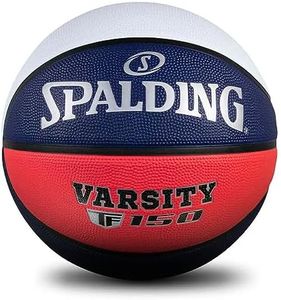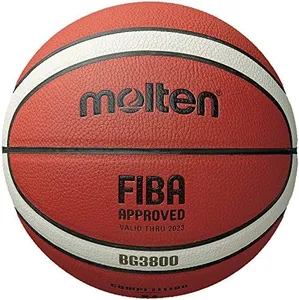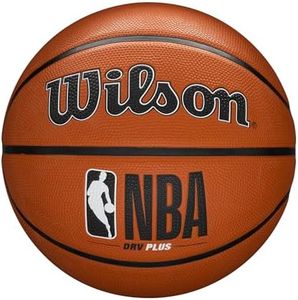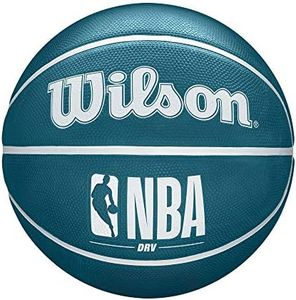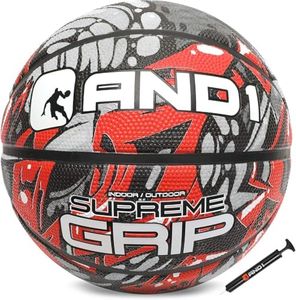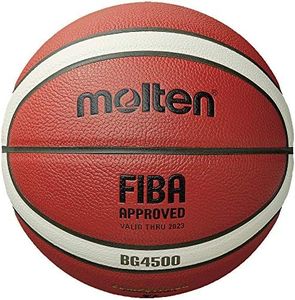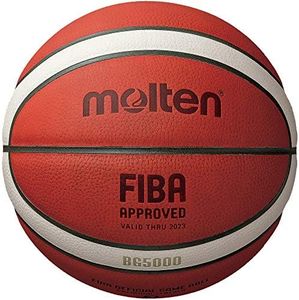We Use CookiesWe use cookies to enhance the security, performance,
functionality and for analytical and promotional activities. By continuing to browse this site you
are agreeing to our privacy policy
10 Best Outdoor Basketball Ball
From leading brands and best sellers available on the web.Buying Guide for the Best Outdoor Basketball Ball
Choosing the right outdoor basketball is important for anyone who wants to enjoy playing the game outside, whether it's for recreational matches, training, or competitive play. Outdoor basketballs are specifically designed to handle rough surfaces like concrete or asphalt, and making the right choice will improve your playing experience and the ball’s lifespan. To find the best fit, it's good to focus on how and where you’ll use the ball, how often you play, and what feels comfortable in your hands.MaterialMaterial refers to what the basketball is made of. The main types are rubber, composite (a mix of synthetic materials), and sometimes leather (though leather is rare for outdoor balls). Rubber balls are the most durable and affordable, making them ideal for rougher surfaces and longer use outdoors. Composite balls offer a softer feel and perform closer to professional indoor balls, but may wear out faster on rough courts. Leather balls are not recommended for outdoor use as they can get damaged quickly. For street courts, a rubber ball is great for beginners or frequent play, while a composite ball might be better if you want a nicer feel and play less often.
Grip and TextureGrip and texture refer to the surface design of the ball, which affects how well you can control it and your comfort while dribbling or shooting. Deeper, more pronounced pebbling or patterns on the surface usually provide a better grip, especially if your hands are sweaty or the ball gets dusty. Balls with a softer or tackier feel offer more control but might attract more dirt. If you play intense games or value handling, go with a ball that has noticeable pebbling and grip; for casual use, a basic textured surface will do.
SizeSize determines the circumference and weight of the ball. Standard men's basketballs are size 7 (29.5 inches), women's are usually size 6 (28.5 inches), and youth balls are size 5 (27.5 inches). Picking the right size is important for skill development and comfort. Adults and teens generally use size 7, most women and older children prefer size 6, and young kids should use size 5. Match the ball size to your age group or league requirements to ensure the best playability.
DurabilityDurability describes how well the ball stands up to outdoor use, including rough surfaces, changes in weather, and repeated play. Outdoor balls often have reinforced or thicker covers to increase their lifespan compared to indoor balls. If you play frequently or in areas with harsher surfaces, look for a ball that's specifically labeled for outdoor or all-surface use, as these are built to withstand more punishment.
Bounce ConsistencyBounce consistency refers to how predictably the basketball rebounds off the ground. Outdoor balls designed for rough courts usually offer a more consistent bounce, even as the ball wears down over time. A ball with poor bounce can make the game frustrating and limit skill progression. Test or read reviews about bounce consistency, and choose a ball that maintains a steady bounce on concrete or asphalt—this is essential for enjoyable play.


